The Narmada Bachao Andolan (NBA) has always had women, both from within the affected communities and activists from outside the valley at its forefront. Be it in Gujarat, Maharashtra or Madhya Pradesh, women have led the struggle from the frontlines and in the process borne the brunt of state repression. Many were jailed, beaten and a few were even sexually abused for their opposition to the Sardar Sarovar Project (SSP) and the development model it represents. The interviews presented here are the voices of some key women leaders of the movement narrating their experience of the struggle and the unique and diverse roles played by women in the movement.
Dedli (bai) Vasave
Submergence Village: Domkhedi, Maharashtra
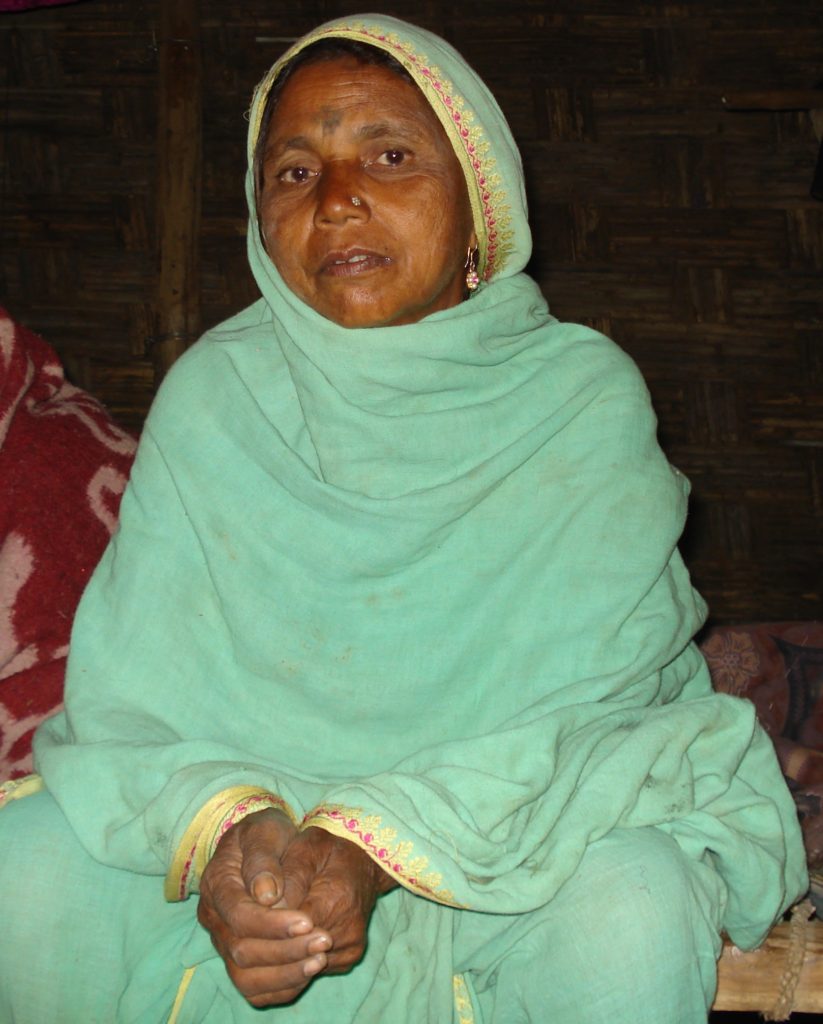
Dedlibai has been one of the key adivasi leaders of the Narmada Bachao Andolan (NBA). Her village Domkhedi is one of the 33 villages in the submergence zone of the Sardar Sarovar Project (SSP) in the state of Maharashtra. Dedlibai’s contribution to the NBA has been phenomenal donning several responsibilities, right from mobilisation of the women in the remote adivasi villages affected by the SSP, to representing the NBA before government functionaries and committees. Dedlibai’s interview here is unique as she narrates her own role as well as how the adivasi women of the Narmada valley, with no formal education, belonging to villages where electricity never came and roads were built by the state only to displace the thousands of scheduled tribe families, fought for their right to life.
Interview Duration: 0:53:00
Language: Pawari, Subtitles in English
Pervi
Submergence Village Jalsindhi, Madhya Pradesh
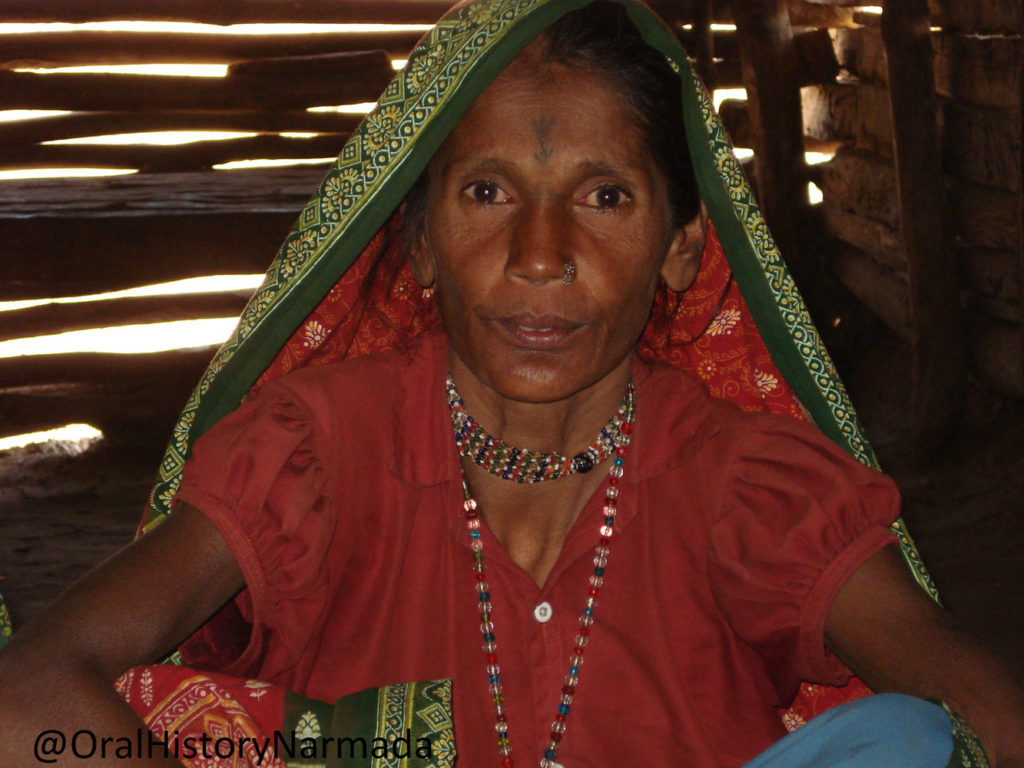
Pervi, a senior Adivasi leader of Narmada Bachao Andolan (NBA) and Khedut Mazdoor Chetna Sangathan (KMCS) belonged to one of the 193 villages to submerge in the Sardar Sarovar Project (SSP) in Madhya Pradesh (MP). As part of KMCS and NBA, Pervi’s struggle was on multiple fronts. Initially in the 1980s it was against the forest department in MP for establishing scheduled tribe rights over forest lands and against indescribable state repression; later, against the SSP as part of the NBA. Pervi’s interview is therefore unique to understand the many struggles of both the KMCS and the NBA.
Interview Duration: 0:59:30
Language: Bhilali, Subtitles in English
Sadhana Dadhich
Pune, Maharashtra
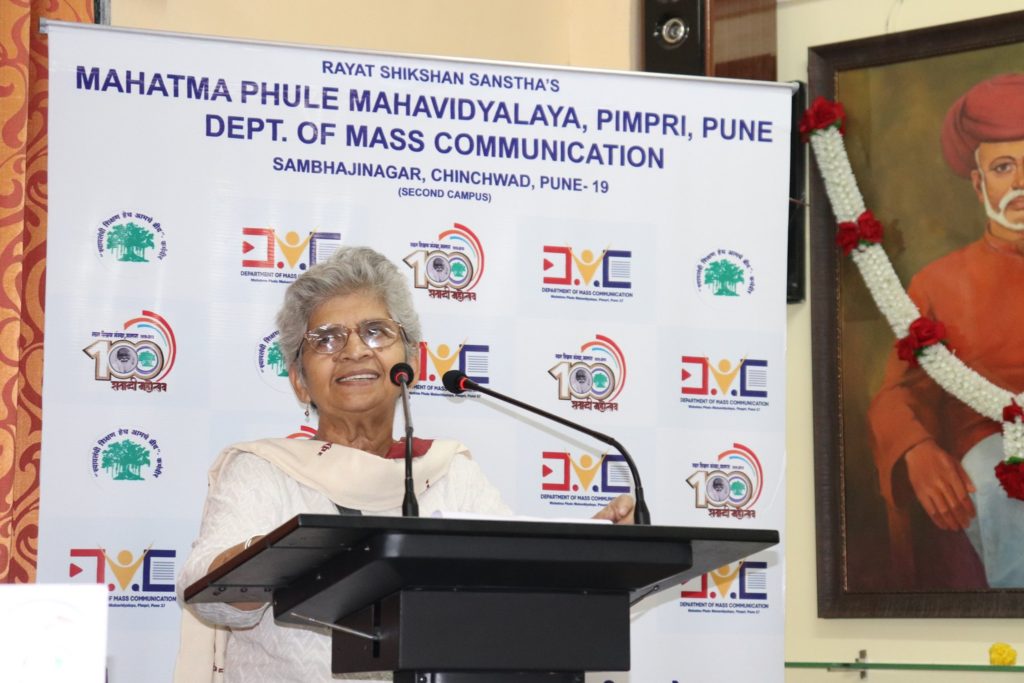
Sadhana Dadhich, has been one of the key members of the Narmada Bachao Andolan (NBA) from the early days of the movement. Her role in the expansion of NBA in the state of Maharashtra is phenomenal and has worked tirelessly year after year in strengthening the NBA. A physiotherapist by profession who worked and retired from the Indian Army, Sadhana worked initially for women’s rights and is the founding member of Nari Samata Manch, Pune. Later on, she began working for the NBA devoting her substantial time in strengthening the ideological base of the movement, forming and strengthening the NBA support group (Samanvay Samities) in Pune where she remained based, travelling extensively to the other parts of Maharashtra to establish NBA support groups and spending time in the Narmada valley especially in the early years to mobilise and increase women’s participation in the movement. Maharashtra is a unique state as far as dams are concerned. It is a state with the largest number of big dams in the country on one hand and one of the earliest dam struggles in the country, the Mulshi Satyagraha on the other. Expanding the NBA base in Maharashtra was not easy with a strong support for large dams not just among development planners but dams being supported by the powerful sugarcane lobby and by some of the progressive and established people’s organisations and political parties in the state. And yet, Sadhana worked year after year to strengthen the NBA base in the state and carry out extensive support activities for the movement especially in the times of crises that the movement faced.
Interview Duration: 2:46:00
Language: Hindi and English, Subtitles in English
Kapila (ben) Tadvi
Vaghadia, Gujarat
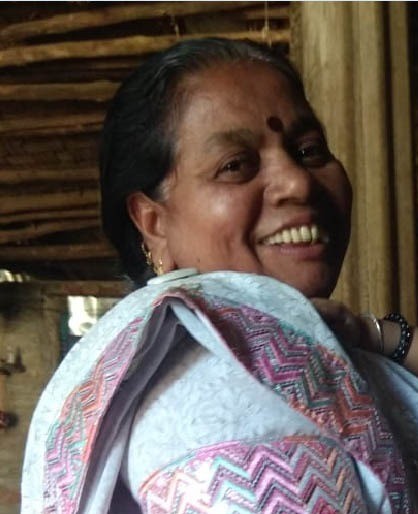
“They thrash us a lot…They beat us women specially; believing/assuming women show more strength…we have been going to jail ever since the movement began”, Kapilaben Tadvi.
Kapilaben, one among the main adivasi leaders of the Narmada Bachao Andolan (NBA) in Gujarat, who sadly passed away only very recently as I write this in March 2021, was from village Vaghadia, one of the 6 villages acquired for Kevadia Colony, the staff colony of the Sardar Sarovar Project (SSP). Kevadia Colony, now famous for the world’s tallest statue-the Statue of Unity has seen the struggle of the scheduled tribe villages ever since the foundation of the SSP was laid in 1961. The struggle of the adivasi women of these villages in particular has been extraordinary as they fought against a project popularly believed as Gujarat’s lifeline.
Kapilaben’s interview is a must listen as it throws light on the terrible history of dispossession of a scheduled tribe community and the amazing role the adivasi women have played in one of the key struggles against destructive development in independent India, a struggle which raised an important question about development projects: “Who Benefits? At Whose Cost?” Kapilaben led the struggle from the front and it was from her home the NBA office functioned for several years. Her interview helps us understand first-hand the other side of this symbol of the “Gujarat Model”, and what this large-dam based model of development has done to the people belonging to the scheduled tribe of the same state.
What is ironic is that while Kevadia colony is a tourism hotspot today and boasts of world’s tallest statue and draws worldwide attention, the adivasi communities, whose lands this popular destination in Gujarat is built on, have not been considered project affected and never rehabilitated. Instead, they continue to be subjected to dispossession of their lands and natural resources and when they protest, they become victims of State repression. But this has not deterred the people and the struggle continues till date, over 60 years since the acquisition of the scheduled tribe lands in 1961.
Interview Duration: 2:00:00
Language: Gujarati, Subtitles in English
Rukmani (Kaki) Patidar
Submergence Village: Chotabadada, Madhya Pradesh
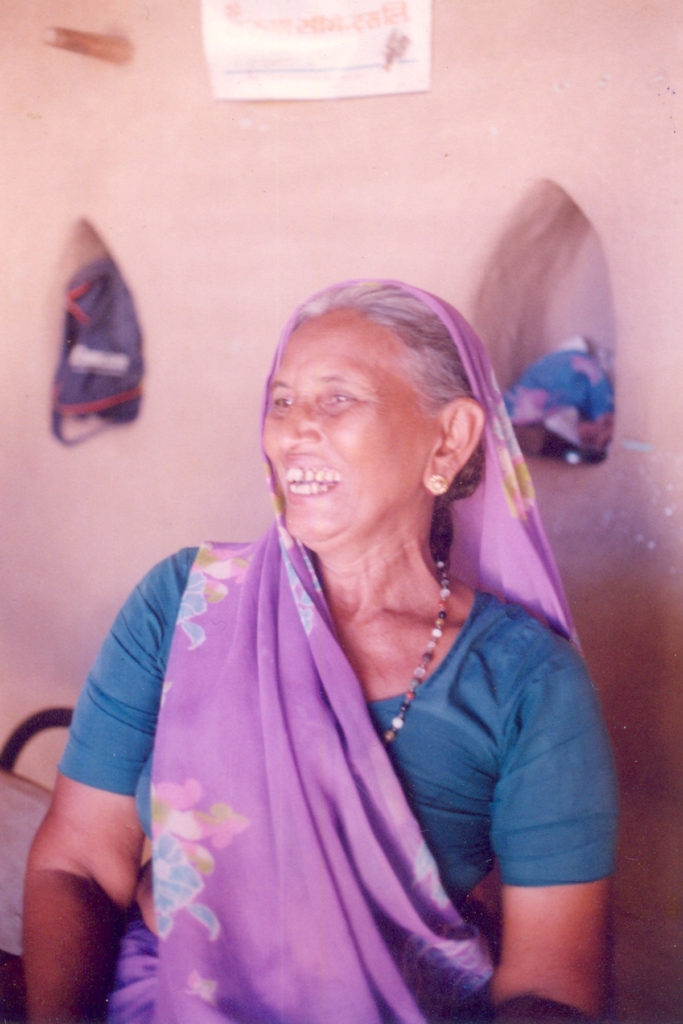
Women have been the back bone of the NBA, particularly local women who have taken up several important responsibilities in the movement including mobilisation, leading rallies from the front, dialogue with the government, undertaking fasts, being part of the dedicated squad of the NBA for programs like Jalsamarpan and so on. One of the most outstanding of them all is Rukmani Patidar, popularly known as Rukmikaki or just Kaki. An oustee herself, she was one of the first woman from a submergence village, to come forward to not only join the movement against the Sardar Sarovar Project (SSP) but take upon herself the task of mobilising other women across the Narmada Valley from the early phases of the movement itself. Without local women leaders like Rukmikaki, it would not have been possible to have such a large participation of women in the NBA, particularly from villages of Nimad where patriarchal norms are entrenched and where gender inequality is widely prevalent.
Rukmikaki’s interview throws light on how women in the Narmada valley were mobilised, as before this, it was not common for women to step out of their homes for political and public work in such large numbers. She talks of her own role in helping women of the Narmada valley to overcome gender discrimination. This interview particularly helps understand the efforts that go into building a powerful people’s movement and how women who had rarely stepped outside of their homes and villages became transformed into active participants of an intense struggle to protect their livelihoods against destructive development, willing even to face police batons and getting jailed. Rukmikaki explains how mobilisation of people and meaningful participation of people, including women is key behind effectiveness of any struggle and this also is the most difficult of all tasks in a struggle.
Rukmikaki’s interview throws light on this as well as many intricacies of the NBA as well as her views on the different strategies of the movement including fasts and jalsamarpan.
Interview Duration: 2:20:00
Language: Hindi, Subtitles in English
Geeta Vasave
Submergence Village Nimghavan, Maharashtra
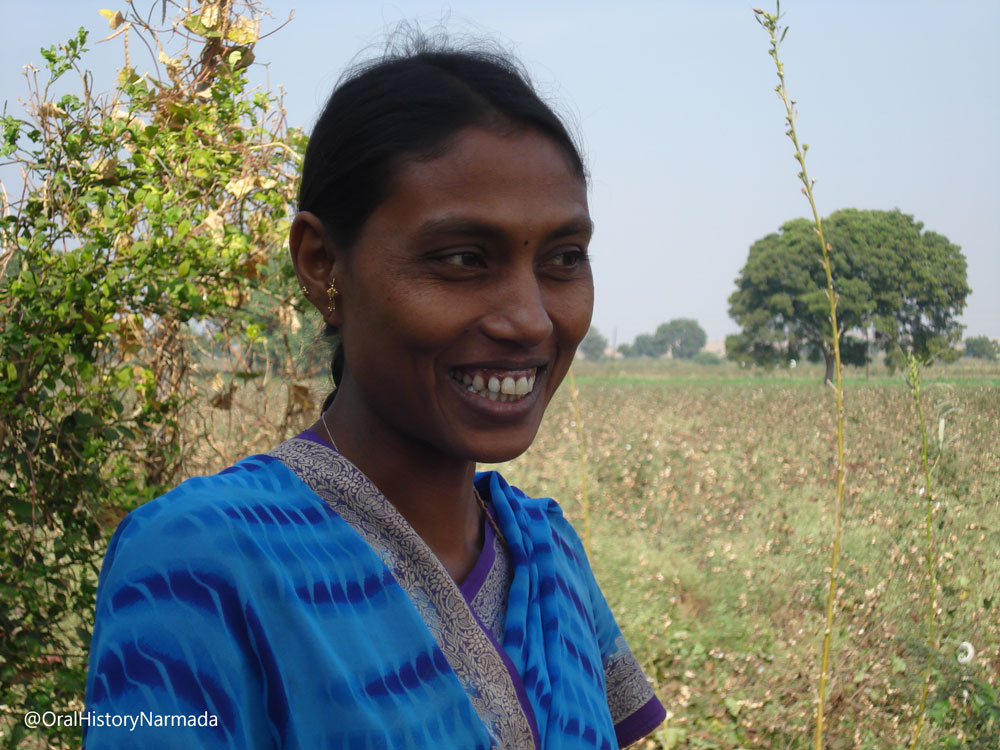
Women from the submergence villages of the Sardar Sarovar Project have played a key role in the struggle. Among them, the struggle of women from the adivasi villages of Maharashtra that have submerged, displaced and scattered into several rehabilitation sites, need to be heard to be believed. One dynamic young girl among them, Geeta Vasave, narrates her life story from being just a girl when she first heard of the dam and that her village would be submerged to her participation in the struggle as she grew up. She also narrates how she was the first girl to study till the standard 12th from her community, how she became the 1st woman Sarpanch in the area and the struggle therein. This interview also explains in detail the challenges young adivasi adults face on displacement and being left out of the rehabilitation plans and policies of the state simply because they do not have written birth records or identity documents. This interview is a must listen for all those who wish to understand the personal and collective struggles of adivasi girls and women on the banks of the Narmada displaced ruthlessly by the Sardar Sarovar Project.
Interview Duration: 1:08:00
Language: Marathi, Subtitles in English
Bhagvati (Bhabhi) Patidar
Submergence Village Kundia, Madhya Pradesh
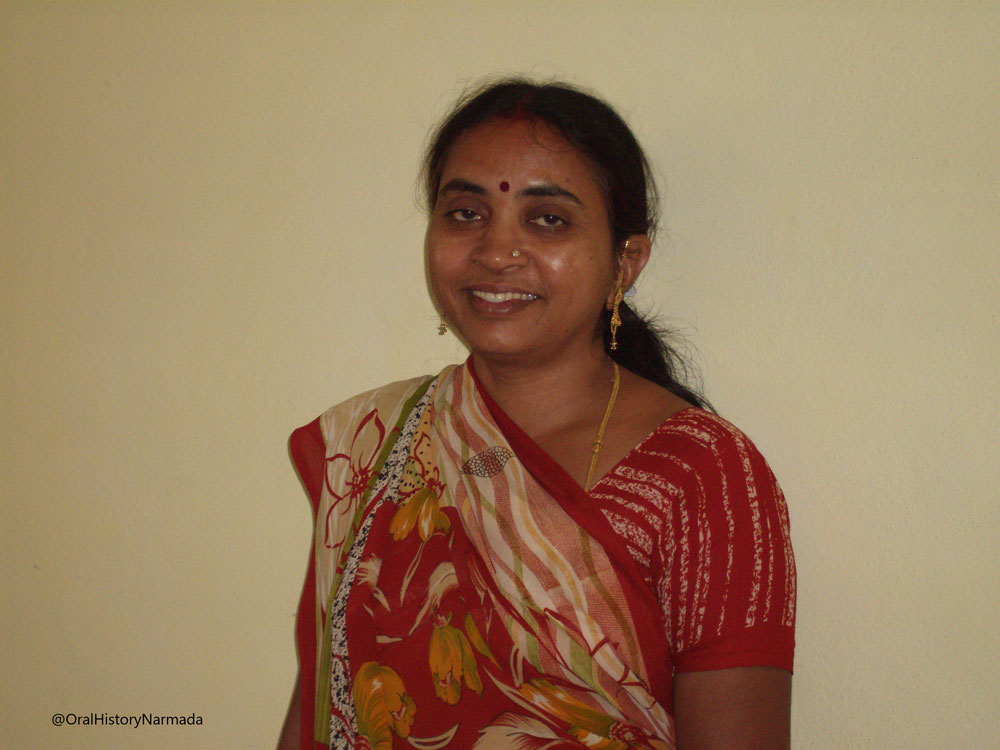
It was not easy to extend steadfast support to the Narmada Bachao Andolan (NBA), for being a woman in Nimad, Madhya Pradesh where patriarchy is strong. This was particularly true during the formative years of the NBA. There would not be a program of NBA where Bhagvati, whom we affectionately called bhabhi, would not be there. She led by her quiet but unwavering presence, instilling great confidence among women – both young and old to be active in the NBA. Her presence at the frontlines of the NBA helped mobilise women and encourage them to participate in the struggle. Bhabhi’s entire family, both from her parent’s side and her in-law’s side have played a phenomenal role in the movement. Her home in Kundia for an extended period of time was like the extension of NBA office cum home where activists and supporters of the movement were welcomed any time of the day or night, all year around. Not only did the stream of NBA activists and supporters get a place to stay at their home, but were served sumptuous meals lovingly cooked by bhabhi and her sisters-in-law. And when the NBA went to the power centers of the country like Delhi, Bhopal, Mumbai, etc., bhabhi would cook and carry with her delicious home cooked food for activists that would last for days, while NBA campaigned in these faraway places. It was bhabhi’s warmth that strengthened the comradery among people and activists in the movement in midst of state repression and hostility.
Bhagvati bhabhi’s husband, Maheshbhai’s role in building the NBA and strengthening its presence in the submergence villages of Madhya Pradesh, is unmatched. A great mobiliser and orator, Maheshbhai was extremely popular among the oustees as well as the support groups of the movement. Bhagvati bhabhi’s brother, Mohanbhai Patidar and his family has also played an extremely important role in the NBA. And later on, her daughters too played significant roles in the struggle. Belonging to such families, bhabhi remains a binding force in the NBA.
Interview Duration: 0:52:46
Language: Hindi, Subtitles in English